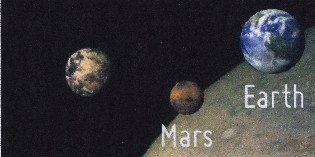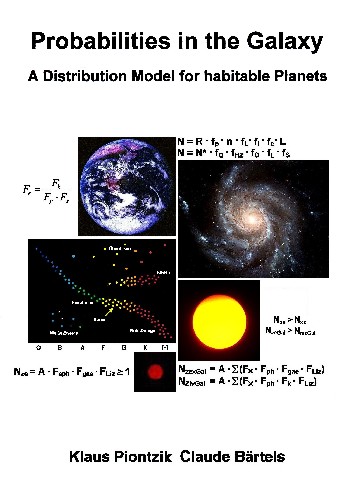 |
Subearth
are planets that have a smaller mass than Earth
and are smaller in size. According to the
Habitable Exoplanets Catalog, December 2017,
there is one Subearth among 53
habitable planets. This corresponds to a share of
1.886%. The probability factor
is thus Fhsub = 0.018,867 = 1:53.
|
| 2.2.1 Theorem |
1.886
% of all habitable planets, in solar-like star
systems, are probably subearths. |
Then equation 1.6.1 can be modified
for solar-like star systems that have habitable planets
and a relationship for subearths can be derived.
Related to all star systems A in our
galaxy, the numberl Nhsub of the G-star systems, with habitable
subearths, results to:
| 2.2.2 Equation |
Nhsub = Nh · Fhsub
Nhsub = A · Fsph · Fhsub |
Starting point are 100-300 billion
solar systems in the galaxy, and inserting into equation
2.2.2 provides:
| 2.2.3 Theorem |
There
could be 125,786 to 377,358 habitable subearths
in solar-like star systems in our galaxy. |
The probability of habitable
subearths in solar-like star systems, in the galaxy, is
then:
| 2.2.4 Definition |
Fsub = Fsph · Fhsub |
Fsub = 1:15,000 · 1:53
Fsub = 0.000,001,258 = 1:795,000
Among about 795,000 sun-like star
systems there is one with a habitable subsoil.
In principle nothing speaks against the fact that life
can also develop on subearths, at least in the form of
flora. It is doubtful, however, because of the low
gravity and size only a thin atmosphere can form, whether
on such planets really higher life, intelligence and
civilization can develop.
|
